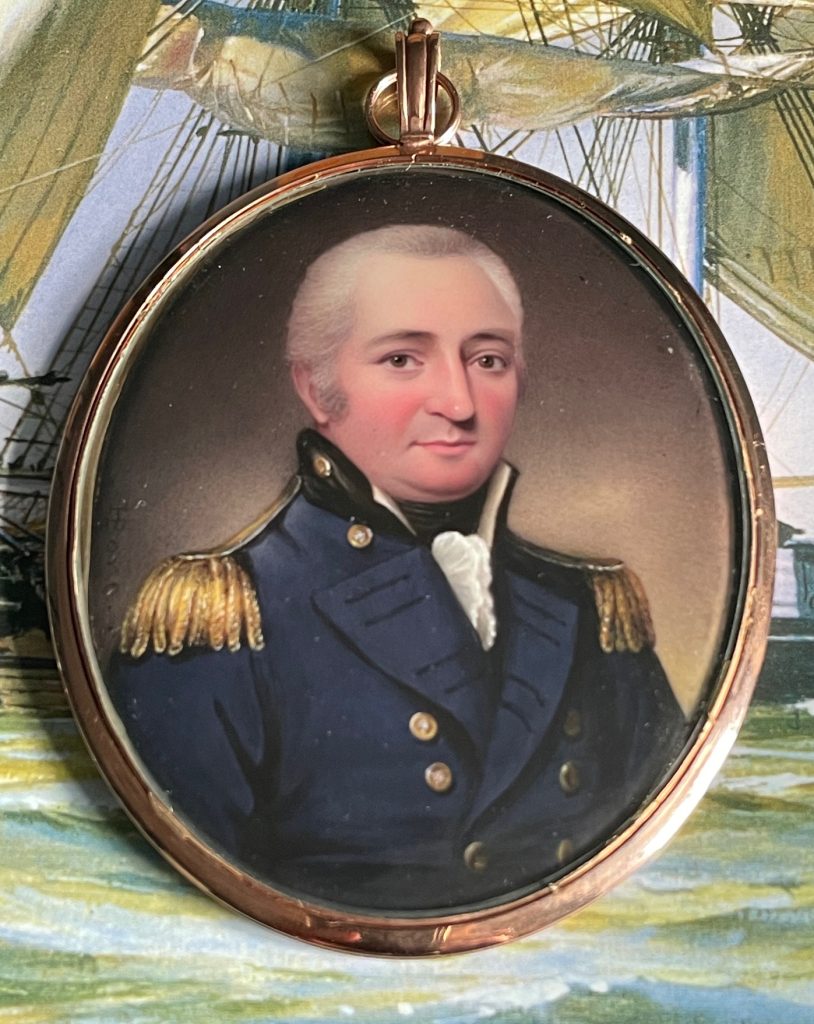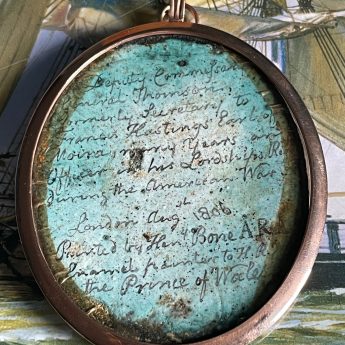
Sir John Deas Thomson KCH, FRS, FLS
Portrait miniatures, silhouettes, portraits & an omnium-gatherum of historical interest & character.
Enquiries and orders
Sir John Deas Thomson KCH, FRS, FLS
Henry Bone ARA
£2,800
Resplendent in his naval uniform and decorated with two epaulettes, this enamel portrait by Henry Bone depicts Naval Commissioner Sir John Deas Thomson.
Born in Edinburgh in 1763, Thomson had a successful career in naval administration as had his father before him but, as a young man, he first travelled to Charleston, South Carolina where his mother had family. There he managed his uncle’s plantation before ambition led him to strike out on his own as a merchant. He married Rebecca Freer, the daughter of an influential planter, became a US citizen and planned to settle permanently in South Carolina. His parents, however, were not supportive of this and so persuaded him to return with his wife to Edinburgh.
There he continued to work as a merchant before being appointed to his father’s old post as Navy Commissioner. In 1805 Sir Charles Middleton, a relative of Thomson’s mother, was appointed First Lord of the Admiralty. He in turn appointed Thomson as his Private Secretary prompting a move to London. Thomson was innovative and had strong administrative skills; his legacy was to doggedly convince the Navy to adopt double-entry book-keeping.
Thomson’s later career saw him appointed as Accountant-General of the Navy in 1829 and then as Naval Storekeeper at the Cape of Good Hope dockyard. He was knighted in 1832 and elected Fellow of the Royal Society and of the Linnean Society.
Thomson died at his home in Maidstone in 1838, his wife having long since returned to her native land where she died in 1825. Of his two surviving sons, one became a prominent politician in Australia whilst the other, working as a naval storekeeper in the Cape, was convicted of embezzlement and transported to Australia.
Enamel on copper inscribed on the reverse, signed and dated Aug. 1806; gold frame.
Extensive research shows that the inscription is partially incorrect as, although Francis Hastings did indeed have a secretary named John Thomson, he was never in the Navy. That Thomson went on to publish books on etymology.
Henry Bone (1755-1834) was born in Cornwall. He launched his artistic career painting china in Plymouth before moving to London where he graduated to enamelling designs for watch cases. Bone first exhibited miniature portraits at the Royal Academy in 1781 and was appointed Enamel Painter in Ordinary to George III in 1809. He was in his 80th year when he died at his house in Clarendon Square.
Item Ref. 7513
Size: framed, 84 x 70mm
